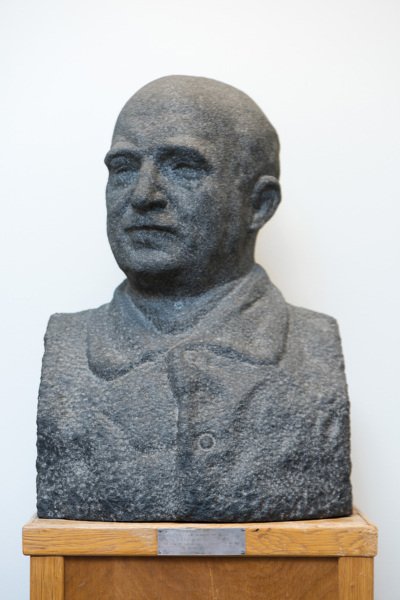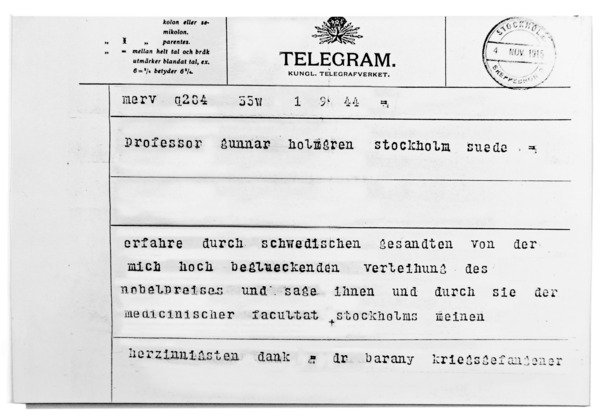The history of ENT Karolinska
At the end of the 1800s-century otolaryngology began to separate from general surgery. The first clinic for ear, nose and throat (ENT) diseases in Sweden was established at the Royal Serafimer Hospital in the 1890s as an outpatient clinic.

A few years later, governmental funds were raised for a teaching position at the Karolinska Institute for the teaching otology, rhinology and laryngology at the Serafimer ENT clinic. ENT diseases became a mandatory course in medical school from 1907. That same year a department of otolaryngology was started at Sabbatsberg hospital under the leadership of Gunnar Holmgren, “the father of Swedish ENT”.
In 1910 the first in-patient ENT ward was established at Sabbatsberg. The disease panorama was mainly complications to infectious diseases, i.e. diphtheria, tubercu- losis, scarlatina, otitis media and pseudo croup. In this preantibiotic era fatal outcomes were common. Besides pioneer clinical work, such as introducing the binocular microscope in ear surgery, allowing to perform fenestration surgery for otosclerosis Gunnar Holmgren conducted major clinical and experimental scientific work. Holmgren had a wide international network, was the president of the Swedish Association of Otorhinolaryngology for 17 years, a member of the Nobel committee and founder of the scientific journal Acta Oto-Laryngologica in 1918.

Many of the ENT surgeons trained at Sabbatsberg were later appointed heads of ENT departments that opened up throughout the country. Sabbatsberg became the ENT flagship clinic in Sweden until the Karolinska hospital was opened.
Karolinska hospital in Solna was inaugurated in 1940 and Torsten Skoog was appointed professor and head of the department of otorhinolaryngology. Professor Paul Frenckner had laid the foundation for modern endoscopy during the 1930s during at his stay at Sabbatsberg`s hospital. During his and professor Gunnar Holmgren´s leadership in the 1940s and 1950s ear surgery at the Karolinska hospital was developed in terms of both reconstructive ear surgery and otosclerosi
In 1960 Carl-Axel Hamberger was appointed professor at Karolinska and successor as the head of the department and remained so until he resigned in 1975. After studies at Memorial Hospital in New York under John Conley he introduced advanced tumour surgery of the head and neck at Karolinska, including transnasal surgery of the pituitary gland, which became the dominating approach for the following decades. A close cooperation was established with Radiumhemmet, the oncological institution at Karolinska and multidisciplinary conferences with representatives from head and neck surgeons and oncologists were introduced for all cancer patients. An Audiological section with Lennart Holmgren and later Bengt Barr was also established during this time.
At the research laboratory Gustav Vth at Karolinska an expanding “Ear-lab” was formed under Jan Wersäll. Important morphological animal studies were performed of the inner ear using electron microscopy, a novel technique at that time. With Åke Flock the field was expanded to physiological studies of the inner ear including studies of ototoxicity and physiology of single hair cells.
In the 1960,s the ENT clinic comprised of four wards with altogether 86 beds. Thanks to improvement in methods of general anesthesia, improved treatment modalities and transition to outpatient surgery the number of beds have successively been reduced over decades. The question today is whether or not this reduction has gone too far, as the number of beds per inhabitant in Stockholm today is among the lowest in Sweden and in Europe.
In 1972 the Huddinge Hospital was opened and was at that time the largest hospital in Sweden. Two years later an ENT department was opened with professor Wersäll as the head of this novel university clinic, fully staffed with a professor, teachers and teaching-assistants, and linked to the Karolinska Institute. Wersäll returned to Karolinska Hospital in Solna as the head of the department after Carl-Axel Hamberger´s retirement in 1975.
During the 1990s and 2000s a series of reorganizations were promoted by the political regime of the county council including new financial system. In 1997 all head and neck surgery in Stockholm was concentrated to Karolinska Hospital in Solna. The profile of Huddinge Hospital was advanced ear surgery, Cochlear implants and Phoniatry.
2004 the Karolinska Hospital, Solna and University Hospital, Huddinge, joined together as Karolinska University Hospital and in 2011, the previously separate Karolinska Institute ENT entities at Solna and Huddinge were joined together as one academic unit under the leadership of Lars Olaf Cardell
In the fall of 2018 the ENT clinic at Karolinska in Stockholm morphed into a novel concept named The New Karolinska University Hospital. It is a whole new, previously untested, operational model with a new thematic organization consisting of themes and functions, and is based on the patient’s journey through the healthcare system. The ENT department has clinically been split up and reorganized into two parts, the Theme Cancer and the Theme Trauma and Reparative Medicine. The academic ENT-division remained united under the leadership of Cardell and has continued to be a part of CLINTEC (created in 2005).
The ENT division has at present a dozen research groups with 33 PhD fellows.
